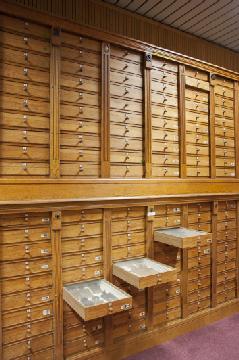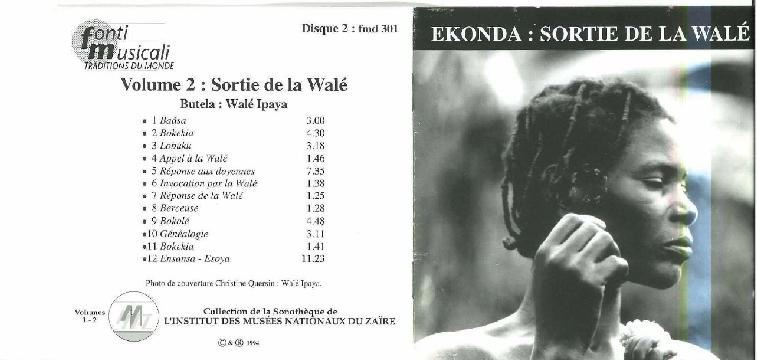Projects
PROMA
Provenance Research and Museum Audiences : A Gender Perspective
Funded by the Belgian Ministry of Science Policy, the PROMA project is part of the current debate on the provenance (and restitution) of colonial collections.
After the reopening of the Royal Museum for Central Africa (RMCA) in 2018 and despite a major renovation, it became clear that the 'colonial' paradigm (in the broadest sense) of the origin of the collections lacked lisibility/visibility within the museum's public space. To counter the lack of contextualisation of the acquisition of the collections presented in the permanent exhibition, several projects have been launched. In 2021, the Provenance Trail was launched in the permanent exhibition. In the same year, two joint initiatives were announced by the Belgian government: firstly, a bill aimed at making possible future restitutions of Congolese, Rwandan and Burundian collections from the colonial context (law adopted in 2022); secondly, the funding of a vast provenance research project on the Cultural Anthropology collections of the Tervuren museum (PROCHE 2022-2025). PROMA is set in this specific, eminently political context. The project takes shape around a hypothesis that combines provenance research and gender studies: analysing the (in)visibilisation of women through/linked to the museum's collections as a way of revisiting both the history of the collections and of the institution (museum and research), while at the same time (re)emerging knowledge and stories about the provenance of the objects themselves.
The recent analogy between the renovation of the AfricaMuseum and a palimpsest (De Groof 2019) invites us to question the dynamics (past and present) of erasure and invisibilisation within the new permanent exhibition. Taking into account relations of domination linked to race and gender is essential in a museum context marked by the (post)colonial era. Gender issues are thus addressed in a situated manner, in close connection with the relations of domination and forms of coloniality that governed the processes ofacquisition, indexing and study of the collections and, more recently, the setting up of the new permanent exhibition. By analysing the permanent exhibition through the prism of this situated notion of gender, we were able to identify several processes of invisibilisation. This approach can be defined as 'multiscalar'. These processes of invisibilisation take place at different scales and levels: both in the information linked to the databases and, where appropriate, included in the labels, and in the choice of (non-)exhibited typologies of 'artefacts' and, more broadly, of collections.
A number of axes (or gaps) have emerged from the identification of these absences:
- the invisibility of (white) masculinities at work in the labels and official discourse surrounding the collections on dispmlay (for example, the gendered construction of the "proverb lids" typology);
- the invisibility of the names of women artists/artisans/intermediaries/collectors in databases and associated labels, in particular when it concerns African women;
- the absence from the permanent exhibition of so-called everyday objects often associated with the domestic sphere and therefore, by extension, with the female gender (e.g. the 1,708 combs in the storerooms).
- an unthought about the nature of collections: the example of "ethnographic objects" made of human hair ;
- the lack of knowledge and visibility of sound archives as an oral and performative matrimony.
After the reopening of the Royal Museum for Central Africa (RMCA) in 2018 and despite a major renovation, it became clear that the 'colonial' paradigm (in the broadest sense) of the origin of the collections lacked lisibility/visibility within the museum's public space. To counter the lack of contextualisation of the acquisition of the collections presented in the permanent exhibition, several projects have been launched. In 2021, the Provenance Trail was launched in the permanent exhibition. In the same year, two joint initiatives were announced by the Belgian government: firstly, a bill aimed at making possible future restitutions of Congolese, Rwandan and Burundian collections from the colonial context (law adopted in 2022); secondly, the funding of a vast provenance research project on the Cultural Anthropology collections of the Tervuren museum (PROCHE 2022-2025). PROMA is set in this specific, eminently political context. The project takes shape around a hypothesis that combines provenance research and gender studies: analysing the (in)visibilisation of women through/linked to the museum's collections as a way of revisiting both the history of the collections and of the institution (museum and research), while at the same time (re)emerging knowledge and stories about the provenance of the objects themselves.
The recent analogy between the renovation of the AfricaMuseum and a palimpsest (De Groof 2019) invites us to question the dynamics (past and present) of erasure and invisibilisation within the new permanent exhibition. Taking into account relations of domination linked to race and gender is essential in a museum context marked by the (post)colonial era. Gender issues are thus addressed in a situated manner, in close connection with the relations of domination and forms of coloniality that governed the processes ofacquisition, indexing and study of the collections and, more recently, the setting up of the new permanent exhibition. By analysing the permanent exhibition through the prism of this situated notion of gender, we were able to identify several processes of invisibilisation. This approach can be defined as 'multiscalar'. These processes of invisibilisation take place at different scales and levels: both in the information linked to the databases and, where appropriate, included in the labels, and in the choice of (non-)exhibited typologies of 'artefacts' and, more broadly, of collections.
A number of axes (or gaps) have emerged from the identification of these absences:
- the invisibility of (white) masculinities at work in the labels and official discourse surrounding the collections on dispmlay (for example, the gendered construction of the "proverb lids" typology);
- the invisibility of the names of women artists/artisans/intermediaries/collectors in databases and associated labels, in particular when it concerns African women;
- the absence from the permanent exhibition of so-called everyday objects often associated with the domestic sphere and therefore, by extension, with the female gender (e.g. the 1,708 combs in the storerooms).
- an unthought about the nature of collections: the example of "ethnographic objects" made of human hair ;
- the lack of knowledge and visibility of sound archives as an oral and performative matrimony.
Principal investigators:
Dates:
2023 2026Museum staff:
External collaborators:
Aline BosumaVandi Makubikua


